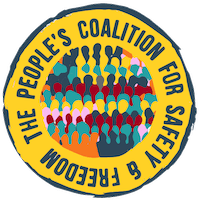The ‘94 Crime Bill spent billions of dollars of our money on policing, jails, and prisons.
This contributed deeply to the current crises of police brutality, mass criminalization, incarceration, and surveillance — all of which disproportionately impact Black communities and other communities of color.
What
The Bill Did
The Bill Did
Authorized nearly $10 billion in subsidies to expand state prisons
Eliminated Pell Grants (higher educational grants) for people in prison
Established system to compensate states for incarcerating undocumented immigrants
By The Numbers
The 94 Crime Bill authorized a total of $30.2 billion over six years, from 1995-2000. The bulk of these dollars were designated for law enforcement and prison infrastructure, contributing significant financial resources to policing, mass incarceration, and criminalization:
-
Authorized a combined $23.1 billion for law enforcement and prison construction
-
Authorized a total of $10.8 billion for several programs to assist state and local law enforcement. Most of the funds—$8.8 billion—was to support hiring additional police officers.
-
Authorized $9.7 billion for states to build and operate prisons, including for the incarceration of undocumented immigrants.
The number of police officers increased 28 percent from 1990 to 1999, an increase partially funded by the Bill.
Between 1996 and 1998, 28 states received over $680 million in Truth-in- Sentencing Incentive Grants from the federal government. By 1999, 42 states had truth-in-sentencing laws.

The Violence Against Women Act (VAWA)
Established the Violence Against Women Act, which placed the vast bulk of resources and funding for addressing intimate partner violence into punitive legal systems, including deepening police involvement and criminal prosecution as means to reduce domestic violence.
VAWA created the Office on Violence Against Women (OVW) in the Department of Justice, which has awarded over $9 billion in federal grants.
In 1994, 62% of VAWA money was dedicated to the legal system. By 2013, this rose to 84%. In 2017, $250 million was sent directly to courts, police, and prosecutors. It funded the hiring of approximately 100,000 new police officers.
Sentencing Guidelines
Implemented a “Three Strikes” rule – mandatory life imprisonment without parole for committing a serious violent felony when a person has two prior felony convictions
Permitted 13 year-olds to be tried as adults
Created 60 new death penalty offenses
Enhanced penalties for drug-related offenses
Established new and increased criminal penalties for immigration violations
Added dozens of new federal offenses
COPS Program
Established Community Oriented Policing Services (the “COPS office”)
COPS has granted over $14 billion to local law enforcement agencies through grants and information sharing since its establishment
The COPS office has funneled more than $1 billion to fund the expansion of policing and surveillance infrastructure in schools.

